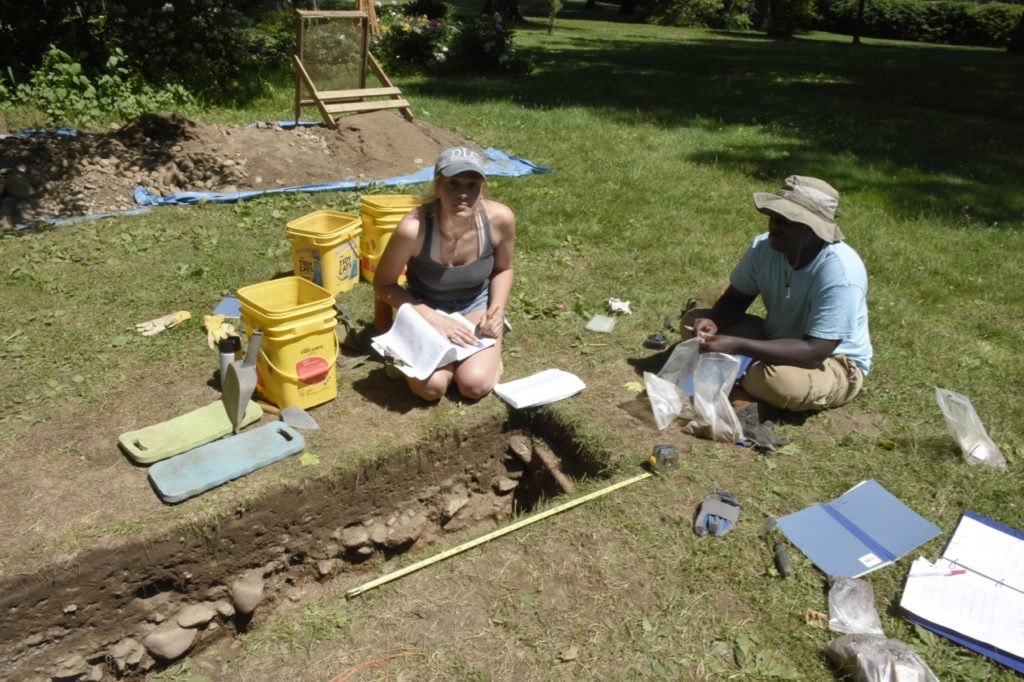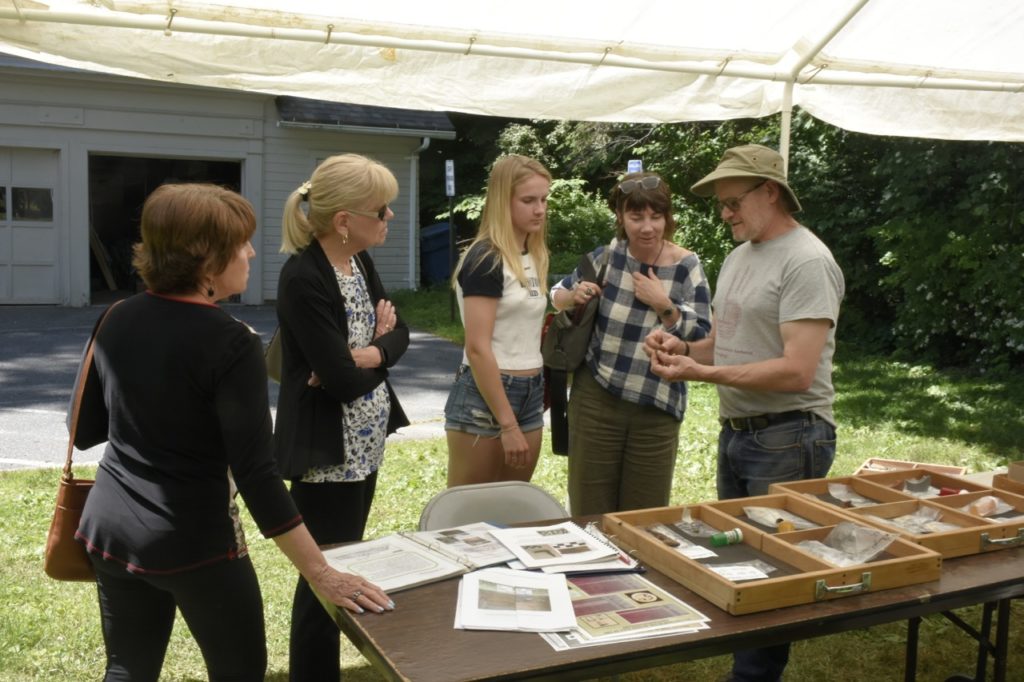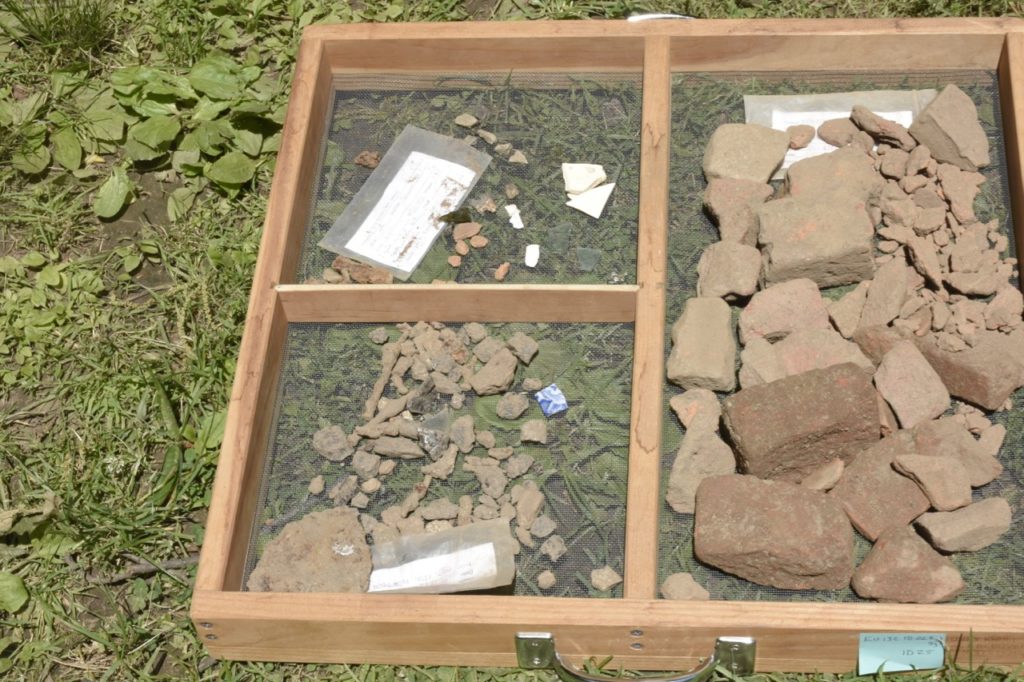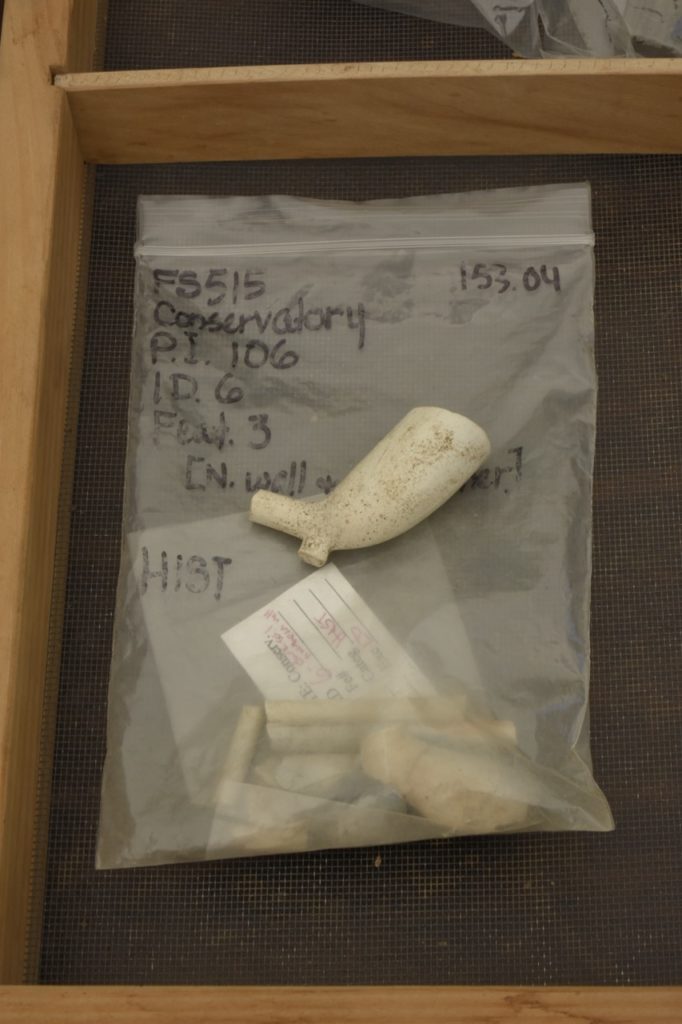EXCAVATIONS AT EMILY DICKINSON HOMESTEAD

UMass Archaeological Field School students Julia Barber (GCC) and Mickey Cox (UMass) profile an excavation trench revealing the surface of an historic barnyard. Photo: Art Keene
Archaeologists from UMass Amherst are currently conducting excavations on the grounds of the Emily Dickinson Museum and will continue to do so on weekdays through the end of June. The public is invited to visit and to talk to them about their work.
The research is part of the month-long UMass archaeological “field school,” which trains students to do professional archaeological field work. Students split their time between excavating at the Dickinson homestead, working in the on-site field lab, and analyzing artifacts back in the lab at UMass. The field school began working at the site in 2015 and students have returned every year with unique research projects.
The current work has three foci. The first is addressing questions of interest to the museum, such as whether there is evidence of the original barn, destroyed when the property was purchased by the Park family in 1916, or of the garden beds that Emily and her sister, Lavinia, maintained. These gardens were informal and expansive, unlike the formal gardens at the Evergreens next door.
The second focus is mitigation work, surveying areas of planned construction to obtain archaeological evidence before it is lost.
The third focus is to increase public engagement, helping visitors imagine multiple complex narratives about the past. For example, the Park family made substantial changes to the property, such as demolishing the old barn and conservatory, after purchasing it in 1916. The field school is helping restore the property (e.g. locating the boundaries of the conservatory or gardens for reconstruction) to its state when occupied by the Dickinsons.

This year, the archaeologists are conducting test excavations along a planned path that will go from the Dickinson Museum to a home on Triangle Street formerly owned by the late UMass biologist Lynn Margulis. The property has been purchased by the Dickinson Museum and will become the home to the museum’s administrative offices, allowing the rooms now used for administration to be restored to their original use. Those test excavations have revealed the buried surface of the old barnyard and numerous artifacts that one might expect to find in a barnyard including bricks, animal bones, ceramics and glass.

Field school co- director Eric Johnson noted that they hoped to find the foundations of the old barn, but it is possible those foundations were removed when the barn was demolished.
“People typically know Emily for her poetry and that’s why they come to the museum,” Johnson said.. “But the museum is also about the quotidian dimension of her life, which until recently very few people knew about. We can fill out those parts of the story. Perhaps when people visit, that’s kind of the last thing that they are looking for but when they come here and see the stuff that we have excavated, it’s a catalyst for asking other kinds of questions. The first thing they see when they enter the grounds is the field lab and the artifacts so they ask about those and that leads to questions about daily life and perhaps about how the story gets told – how history gets written.”

Johnson said the collaboration between the museum and UMass began in 2003 when UMass Archaeological Services surveyed an area prior to excavation required to install an underground cable. There is a State preservation restriction on the property that requires an archaeological survey before any construction or renovation can be done. In 2014 UMass returned to help locate the foundations for the conservatory, which has since been reconstructed. At the end of that year, the museum invited UMass to begin a field school, which has continued to the present.
The Emily Dickinson Museum is located at 280 Main Street in Amherst. Summer visiting hours are WED-MON, 10AM- 5 PM.
